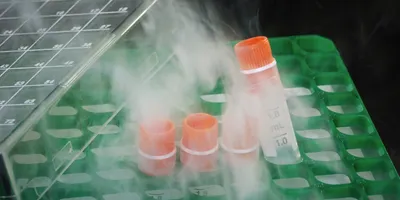Fazel Yavari Is One of Three Finalists for the $30,000 2012 Lemelson-MIT Rensselaer Student Prize
Fazel Yavari has developed a new sensor to detect extremely small quantities of hazardous gases. Made from a 3-D foam of the world’s thinnest material—graphene—this sensor is durable, inexpensive to make, and opens the door to a new generation of gas detectors for use by bomb squads, defense and law enforcement officials, as well as applications in industrial settings.
Yavari, a doctoral student in the Department of Mechanical, Aerospace, and Nuclear Engineering at Rensselaer Polytechnic Institute, is one of three finalists for the 2012 $30,000 Lemelson-MIT Rensselaer Student Prize. A public ceremony announcing this year’s winner will be held at 6:45 p.m. on Wednesday, March 7, in the auditorium of the Rensselaer Center for Biotechnology and Interdisciplinary Studies. For more information on the ceremony visit: http://www.eng.rpi.edu/lemelson
Yavari’s project is titled “High Sensitivity Detection of Hazardous Gases Using a Graphene Foam Network,” and his faculty adviser is Nikhil Koratkar, professor of mechanical, aerospace, and nuclear engineering at Rensselaer.
Detecting trace amounts of hazardous gases present within air is a critical safety and health consideration in many different situations, from industrial manufacturing and chemical processing to bomb detection and environmental monitoring. Conventional gas sensors are either too bulky and expensive, which limits their use in many applications, or they are not sensitive enough to detect trace amounts of gases. Also, many commercial sensors require very high temperatures in order to adequately detect gases, and in turn require large amounts of power.
Researchers have long sought to leverage the power of nanomaterials for gas detection. Individual nanostructures like graphene, an atom-thick sheet of carbon atoms arranged like a nanoscale chicken-wire fence, are extremely sensitive to chemical changes. However, creating a device based on a single nanostructure is costly, highly complex, and the resulting devices are extremely fragile, prone to failure, and offer inconsistent readings.
Yavari has overcome these hurdles and created a device that combines the high sensitivity of a nanostructured material with the durability, low price, and ease of use of a macroscopic device. His new graphene foam sensor, about the size of a postage stamp and as thick as felt, works at room temperature, is considerably less expensive to make, and still very sensitive to tiny amounts of gases. The sensor works by reading the changes in the graphene foam’s electrical conductivity as it encounters gas particles and they stick to the foam’s surface. Another benefit of the Yavari’s device is its ability to quickly and easily remove these stuck chemicals by applying a small electric current.
The new graphene foam sensor has been engineered to detect the gases ammonia and nitrogen dioxide, but can be configured to work with other gases as well. Ammonia detection is important as the gas is commonly used in industrial processes, and ammonia is a byproduct of several explosives. Nitrogen dioxide is also a byproduct of several explosives, as well as a closely monitored pollutant found in combustion exhaust and auto emissions. Yavari’s sensor can detect both gases in quantities as small as 0.5 parts-per-million at room temperature.
When he’s not studying or working in the lab, Yavari likes to keep active by playing tennis, cycling, or skiing. He also enjoys making time to travel around the United States and overseas. At home in Isfahan, Iran, Yavari’s parents are both high school teachers. They encouraged him as a child to study math and science, and today they are very proud of his accomplishments and cheering for him to win the $30,000 Lemelson-MIT Rensselaer Student Prize.
Yavari received his bachelor’s degree in mechanical engineering from Shahrekord University in Iran, and his master’s degrees in mechanical engineering from the University of Tehran.
After earning his doctoral degree later this year, Yavari plans to continue conducting research either in academia or the private sector.
Fazel Yavari Is One of Three Finalists for the $30,000 2012 Lemelson-MIT Rensselaer Student Prize
Fazel Yavari has developed a new sensor to detect extremely small quantities of hazardous gases. Made from a 3-D foam of the world’s thinnest material—graphene—this sensor is durable, inexpensive to make, and opens the door to a new generation of gas detectors for use by bomb squads, defense and law enforcement officials, as well as applications in industrial settings.
To continue reading this article, sign up for FREE to

Membership is FREE and provides you with instant access to eNewsletters, digital publications, article archives, and more.










